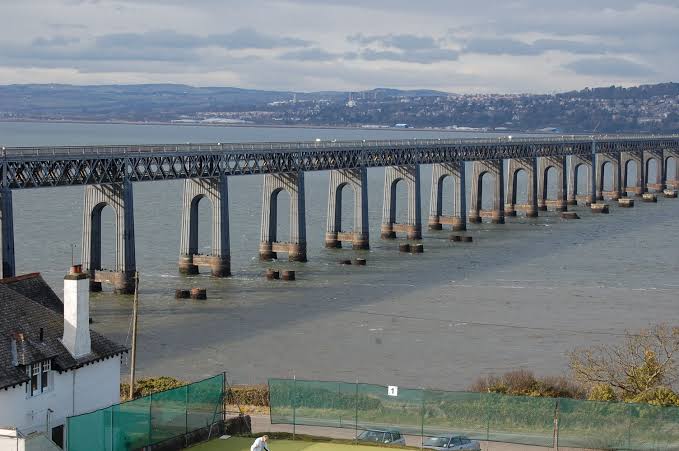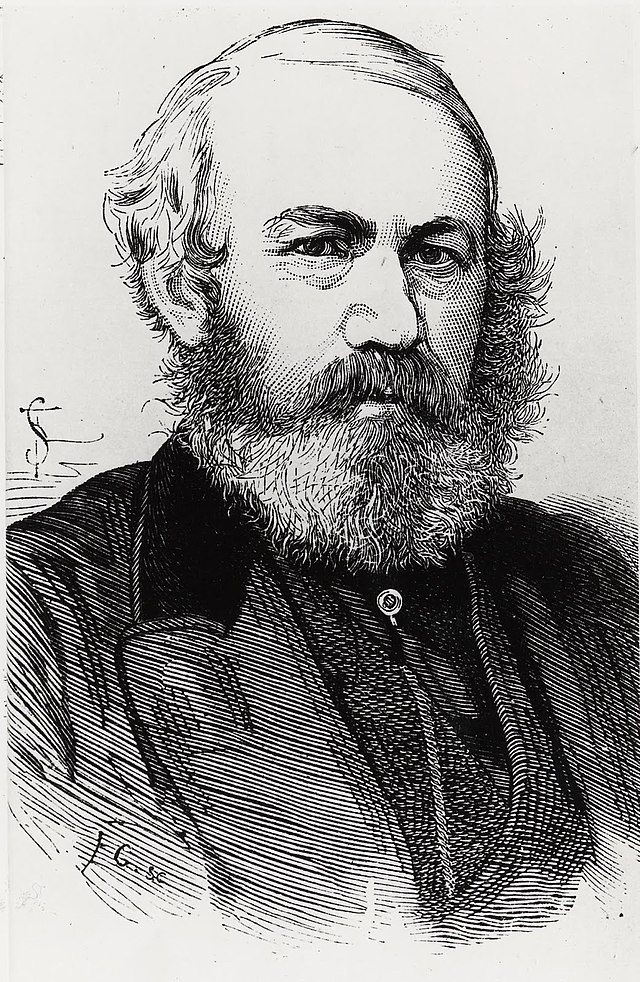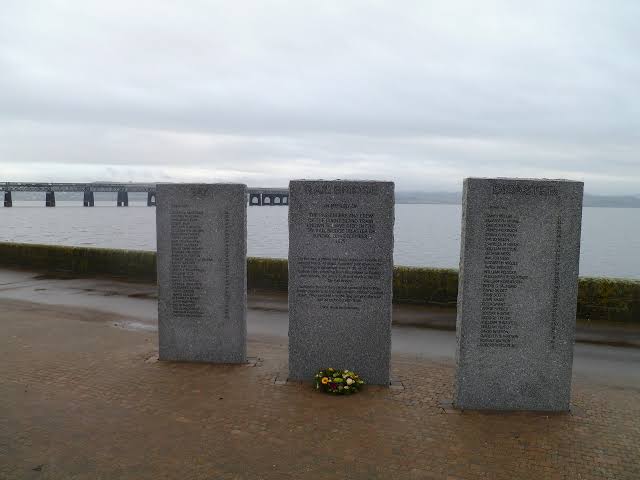In 1879, inadequate design, ineffective supervision, poor workmanship, tight budget restrictions, time constraints and a general lack of understanding of the response of structures to dynamic forces from wind culminated into one of the deadliest structural failures of all time; the Tay Bridge collapse.

It was a gusty December evening on the River Tay, near the city of Dundee in Eastern Scotland- just north of Edinburg, where the river Tay meets the North Sea. Winds were well known to be very high in this area, but on this very day it reached a record speed of 70mph due to a major storm.
On the Tay river lies the Tay rail bridge (See featured image), a bridge that crosses the ‘Firth of Tay’ by connecting the city of Dundee on the north side and the village of Wormit on the south side. It was a single-track bridge. At the time, it was essential to adhere to one train on the bridge at a time, even if two trains where to be going in the same direction. This was ensured via the provision of signal boxes with small cabins manned by railway crews at each end of the bridge. Once a train approaches the bridge, a token was collected at the first signal box, which would then be carried to the other opposite signal box. Signal-men in the signal boxes would communicate this to each other via telegraph wires installed along the bridge, indicating that the train had just exited the bridge.
Few minutes past 1900hrs on the 28th of December 1879, a regular steam powered passenger train on this bridge entered the bridge through the southside, bound for Dundee. On this day however, this train didn’t arrive at the opposite end, so the signalmen in the signal boxes attempted to contact each other, very surprisingly all contact between the signal boxes have being lost. It would subsequently come to light that the entire section of the Tay bridge known as the ‘high girders,’ with the full length of the train along with the passengers it was conveying had plunged into the river Tay (Figure 1). There were no survivors!

The Tay Bridge
The 1860s came with competition between the top railway corporations in this part of the world; the North British Railway (NBR) and the Caledonian Railway. The competition was fierce perhaps, because whoever was first to bridge the River Tay is promised to become a major foot holder in the control of all major Scotland routes. The NBR quickly selected Thomas Bouch for the design. Thomas Bouch (Figure 2) was a renowned civil engineer in his own right, well known for popularizing the use of lattice girders in the construction of railway bridges. A man who became chief engineer and manager in 1849, aged only 26. He was very experienced in constructing railway branch lines. In the past, he had submitted proposals to bridge both the Firth of Forth and the Firth of Tay. However, it wasn’t until this time that he’ll be taken up on these amazing proposals, one of which was – the design and construction of the longest bridge in the world.

Bridging the Firth of Tay did not come without its own challenges. First of all, the bridge was required to be designed to cover a total distance of almost 2mile- the longest at the time. Secondly, a bridge on the Firth of Tay would need to be of adequate elevation because, by virtue of being wider than the Forth, it was frequently used by sea vessels for transportation. Thirdly and more critically, wind speed on the Tay River was well known to be extremely high, in fact so high that it poses a challenge to ferries and boats during winter and spring seasons.
Originally Bouch’s design was to cover the 2mile distance using 89 spans of solid brickwork the longest span was 61m and at the middle of the river. The deck was only wide enough for one track. With the design completed in the late 1860s to early 1870s, construction would officially begin in 1871 with the contract awarded to Hopkin Gilkes and Company. A three-year deadline was set for the completion of the project. However, at the time, for a project of this scale and given the tight budget constraint, it was a lot to ask. This along with other factors would culminate in the long-twisted string of event that led to the failure.
Failure by Design
Preliminary investigation set out to assess the river bed was only conducted in the shallow bank of the river and did not extent to the middle of the river to get a clearer picture at its deepest point. Thus, without a proper site investigation, work would begin on the piers and their foundations from the bank of the river solely based on the preliminary findings which assumed that bedrock or at least a firm stratum will be present at workable depth throughout. Only 14 piers and foundations would have being installed when it was discovered that sufficient stiff strata were suddenly at a depth inaccessible for the planned sunken depth. As pier 15 was placed into the river bed, it began to lean to one side, indicating a very fast rate of settlement and had to be demolished. With the sunken solid brickwork now invalid, the bridge now had to be redesigned, and of course now, with even more haste than before.
Thomas Bouch would revise the design from sunken solid brickwork piers to concrete filled caissons, sunk 5-6m into the softer than predicted river beds (Figure 3). He would also revise the bridge spans from 89 to 85 spans to save time and materials. With pile count now being decreased, the high girders longest span increased to 75m from the initially planned 61m. At both ends of the bridge, the bridge girders were deck trusses, the tops of which was made levelled with the pier tops and then the single-track railway running on top. At the central part of the bridge known as the high girders, the bridge girders ran as through trusses above the pier tops, having the rail line inside them.

For wind loading, Bouch assisted by a wind expert estimated the wind loading on the bridge to be (1kpa) along with the usual margin of safety. However, Bouch relying on the report for his proposal for a suspension Bridge on the Firth of Forth, would assume half this value. Thus, he made no explicit allowance for wind loading in the design of the Tay bridge.
After many delays, modifications in design and the original contractor, Gilkes pulling out due to a financial crisis, the bridge was finally completed and opened on 31st of May 1878 after passing railway inspections. On the 1st of June it was opened to passenger train traffic. Thomas Bouch would then be conferred with a knighthood alongside with heaps of praise for a job well done.
Investigation into Failure
It was widely reported and believed that huge wind was a major factor in the collapse of the bridge, this is not far from the truth. However, what ended up being revealed after months of inquiry and investigation was the exact opposite of the picture of success that was painted on the opening day.
At first the true causes of the collapse would seem elusive, but there was also a legitimate attempt to put the blame solely on the train, given that there is a limit to the amount of wind a train could withstand and remain upright at the time. The attempt was a narrative that goes thus: “the integrity of the bridge or a lack thereof played no part in the incidence but the train leaving the track and impacting the high girders due to the high wind, bringing the bridge down.“ This could’ve been a clever hypothesis since most train at the time were built of relatively light materials as much as possible. However, it was very easy to dispute as every span of the high girders came down, even those were the train weren’t present. There was something more!
Typical of all structural failures in the 19th and 20th century, a commission of enquiry was set up to investigate the cause of this tragedy. After exhaustive interviews of nearly everyone involved in the design and construction of the bridge, from construction workers to even witnesses, signal box officers to train operators. What would be uncovered were many inconsistencies pointing to deeper issues than a single night of extreme winds.
Indeed, it turned out that Thomas Bouch had underestimated wind loading as well as the serviceability limit state of vibration caused by usage. It was also discovered that most of the bridge caissons had being largely affected by scour action. As if this wasn’t enough, it was also uncovered that the columns were not properly anchored to the supports, thus there was no chance that the bridge could’ve resisted an uplift. Bouch would in fact make a clean breast that he predicted no uplift on the bridge from the windward side in his design.
Eye witness account revealed that the high girder piers would oscillate from side to side noticeably whenever a train traverses the bridge. This amount of oscillation brings to light an extra failure point -the sheer metal fatigue in the cast iron logs that braced the lattice work to the bases. Workers in the foundry set up in Wormit also testified to the effect that concerns were raised as to the quality of iron that was used in constructing the bridge. In a bid to beat time, iron scraps found almost anywhere was mixed and used to produce cast iron used in constructing the steel lattice works.
Wind loading unaccounted for, a design that underestimated the dynamic forces and poor workmanship meant that fatigue had already began to set in long before that faithful evening. It was almost a matter of time.
Thomas Bouch hoped and insisted initially that the wind blowing off the track was the primary culprit and not a weakness in the bridge’s design and construction. However, once the outcome was in on how the collapse actually occurred, the committee of inquiry proceedings published in August 1880 held Thomas Bouch fully responsible. If ever the popular adage – “Success has a thousand fathers, failure is an orphan,” holds true, it would apply to Thomas Bouch even as his health would decline rapidly, eventually leading to his demise two months later.
Bouch was in the middle of other bridges as well at the time of collapse, all of which would immediately come under serious scrutiny, one of them was the rail bridge over the Firth of Forth where construction was halted immediately and the design reviewed from the original suspension bridge to a cantilever version.
Lessons from Failure
We’ve seen again and again, perhaps endlessly now, the fact that there is only a thin line between success and failure in structural engineering and this recurrent problem of human factors in ensuring that a potential failure is not stopped. There are always technical factors as with most structural failures, in this case the bridge wasn’t designed to withstand the winter gales. One could in fact posit that the Tay Bridge was a bridge too ambitious, as the state of the art of structural engineering was found to be very wanting. It took the shock of the bridge failure to spur research into wind loading and the use of mild steel in place of cast iron.
Thomas Bouch can be pardoned for his ignorance of wind pressures as he was not alone, however, he cannot be exonerated from his general lack of supervision during the construction of the bridge. At the panel of inquiry, it would have been obvious to anyone who had to attend, that so much was left to subordinates, most of which were either inexperienced or unqualified. For instance, the panel of inquiry would find that, “Beaumont Egg” was used in disguising the imperfections in the cast iron used in the construction of the lattice girders. When these finding was put across to Bouch, he too agreed that this was ‘unworkmanlike’ and that if he had known, he would have ensured that the cast iron were cast vertically to avoid imperfections. When the panel of inquiry pressed further it was found that the source of the “Beaumont Egg” was a foreman molder who had being given far more leeway than should’ve ever been tolerated.

The Failure of the Tay Bridge is a lesson to Project Managers and Civil Engineers on how not to supervise a large project. The replacement Tay bridge would be started by 1883 and this time would take only 4 years to complete, in 1887. It featured solid masonry and iron for the piers, this time had a two-track deck (Figure 4). The legacy of the old bridge is still a reality as the old piers are still very present and visible .
See: The I35W Bridge Failure: Another Instance of Implicit Assumption
Today, there is a very detailed memorial that holds the names of the victims of the Tay Bridge disaster on the North side and pointing in the direction of the high girders (Figure 5).

Sources & Citation
- Lewis P and Reynolds K. ‘Forensic Engineering: an appraisal of the Tay Bridge Disaster,’ (Accessed: Oct 2022)
- Pins Dorf M.K., ‘Engineering Dreams into Disaster: History of the Tay Bridge,’ (Accessed: Oct 2022)
- Burt P.J (2004) ‘The great storm and the fall of the first Tay bridge,’ (Accessed: Oct 2022).
- “The Architect of Scotland’s Tay Bridge Disaster,” The Independent. 27 December 2019. Archived from the original on 29 October 2022.
- Wikipedia (2022) ” The Tay Bridge Disaster“
- Brick Immortar. “Disaster by Design: The Tay Bridge“